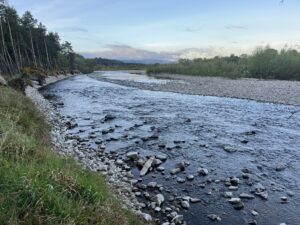
There’s a stretch of the River Spey that I walk most days. It is a habit developed when pandemic rules kept us close to home. My stretch is a mile or so of fast flowing, braided river, with a sand, silt and pebble bed, banked by woodland of willow, Scots pine, rowan and gorse, with mossy burns and silty side pools, and a network of paths that constantly need to be rerouted as they tumble into the river.
Treading the same patch day after day is rewarding in ways I didn’t foresee. Instead of seeking out new places, you become sensitive to the new in the familiar. You start to see a place as not just there but endlessly dynamic with daily, seasonal and annual rhythm and shift. You become part of that rhythm.
You can closely mark the milestones of changing seasons. The dandelion-like colt’s-foot appear in early spring, and I know the incoming tide of pink purslane, stitchwort, forget-me-not, wood anemone, wood sorrel, garlic mustard, ramsons and violets will soon wash over the woodland floor. I know exactly when the sandpipers arrived this year because one morning the riverbank resounded with their urgent whistle and whirr where the previous evening it had not. One evening the osprey hovers silently above the estuary where yesterday there were only gulls. The chiffchaffs begin their onomatopoeic song that they somehow keep up all summer, the sand martins from the exposed red mud cliffs upstream start swooping over the river, eventually the first swifts scream overhead.
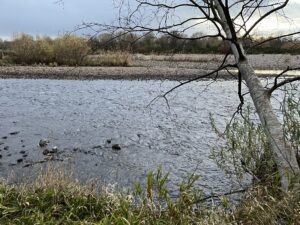
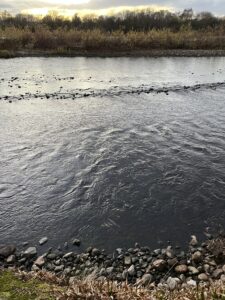
The river is both constant and ever mobile. The strong flow carves out the banks, undercutting the turf to expose packed boulders and tree roots. The trees slow tumble towards the inevitable. Even this I can mark with my daily walks – today I need to duck under this tilted limb where yesterday I could climb over it.
I often wake early and walk at dawn. I see lots of deer that way, being their first disturbance of the morning. I come across an otter bathing in a side stream and get a good look before she notices or cares enough to trundle back into the newly greened willow scrub. I had known the otters were there – early in the spring I heard before I saw two otters slip from their shingle island and swim downstream with noisy whistles. Later in the year, I worry for them when lack of rain leaves the river emptier than I’ve ever seen it and the shingle bank easily accessible to anyone wanting to wade across.

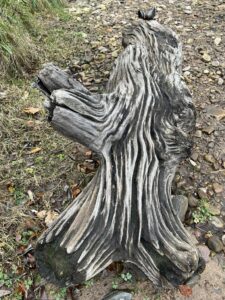
By visiting the same area so regularly, you have the time and freedom to observe at different scales. Often, I see what I am tuned into. One hot, dry day I think there may be lizards, and yes there is one basking on a bleached log. On a wetter day I find endless varieties of beetle under leaf and bark – eyed and larch ladybirds, soldier beetles, shield bugs. Other days I look for and see only birds – goosander, dippers, bullfinches, wrens, treecreepers.
There are other things I do not see but know are here: pine martens, crossbills, large salmon. I only ever have a partial view. The blue-grey opacity of the river, tangle of vegetation and cryptic and evasive wildlife limit my ability to observe. Being immersed in the landscape, however, I can follow these in my imagination. In early spring, I urge the salmon fry out of their redds. In summer I wonder whether the silvery salmon smolts have started their seaward migrations, and whether their rock-and-peat patterned younger siblings notice their absence.
Sometimes I literally immerse myself. Standing in the sandy shallows watching skittish shoals of small salmonid fry and stonefly larvae. Head under, peering through the peaty water with googles on, barely keeping station against the strong current, to see undulating bright green fronds stroking smooth boulders. I’ve seen otters loop-leaping, cormorant-like, to stay in one spot like this and wondered what it is they were so determined to keep track of on the riverbed.
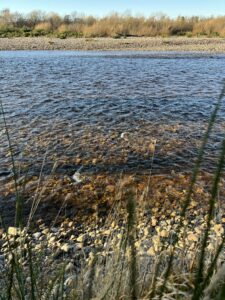

I also see things that perhaps shouldn’t be here, like the dark, sharp-nosed mink staring with glittering eyes from the otter’s bathing pool, the giant hogweed cutting off access to my favourite frogspawn pool, the white butterbur erupting from the sandy banks like landmines, the over-sweet Himalayan balsam. Even the thick layer of silt that carpets the banks after a period of unusual spate. I wonder whether these incomers are nurturing or smothering the river woods.
The river stretches over 100 miles from its birth in the mountains to its ever-changing estuary a few miles from my home. Many people, me included, are compelled to walk the full route from source to sea. But I know there are others – dog walkers, anglers, naturalists, scientists, runners, children – who have a stretch they visit again and again and have become part of its rhythms and change. I picture it as tiles of a boardgame laid out along the river’s length, each carrying custodians invested in a hopeful future.


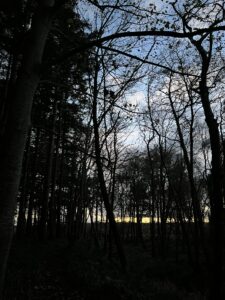
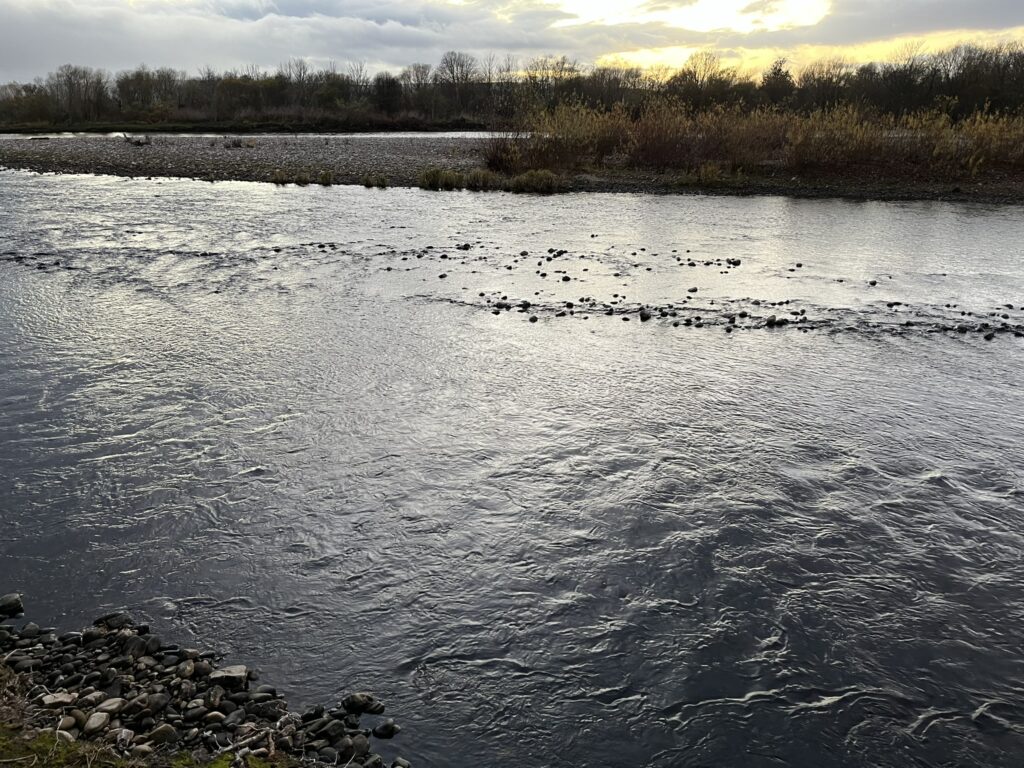
[*The Intake, at the far end of my walk, was a channel built in the early 1900s to funnel water from the fast-flowing Spey to a hydro-electric scheme providing power to the village of Fochabers. It’s no longer in use but the dry channel is still visible and colonised by ivy.]
